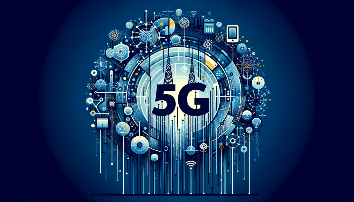
5G networks are indeed spectrum-dependent, meaning their performance, coverage, and capabilities are heavily influenced by the frequency bands allocated for 5G communication. Here are some key aspects to consider regarding the spectrum used in 5G:
5G operates on three main frequency bands – Low-Band Spectrum (Sub-1 GHz): This spectrum provides broad coverage and better penetration through buildings and obstacles.








It offers relatively lower speeds compared to higher bands but is effective for rural and suburban areas.
Examples include 600 MHz and 700 MHz bands.
Mid-Band Spectrum (1 GHz to 6 GHz):
This band strikes a balance between coverage and speed, providing faster data rates than low-band frequencies while still retaining decent coverage.
These frequencies are ideal for suburban and urban environments, providing a good mix of capacity and coverage.
Examples include the 2.5 GHz and 3.5 GHz bands.
High-Band Spectrum (Above 24 GHz, including mmWave):
This spectrum offers the highest data rates and capacity, supporting dense urban environments and applications requiring vast bandwidth.
However, it has limited range and penetration ability, requiring more base stations to cover a given area.
Examples include the 28 GHz and 39 GHz bands.
Spectrum Allocation: The availability and allocation of spectrum can vary significantly by country and region, impacting the deployment and performance of 5G networks.
Regulatory Issues: Governments and regulatory bodies play a crucial role in auctioning and managing spectrum resources, influencing how quickly and effectively 5G networks can be rolled out.
Technological Challenges: Utilizing higher frequency bands may require advancements in technology like beamforming, small cells, and advanced antenna systems to mitigate issues like signal attenuation and limited range.
The choice of spectrum band affects the suitability of various 5G use cases, including:
Enhanced Mobile Broadband (eMBB): Requires high-speed connections, best served by mid-band and high-band spectrum.
Massive Machine Type Communications (mMTC): Typically fits well within low-band and mid-band spectrum due to the wide coverage needed for IoT applications.
Ultra-Reliable Low Latency Communications (URLLC): High-bandwidth and low-latency requirements can be achieved through mid-band and high-band solutions.
Understanding the spectrum dependencies of 5G is crucial for stakeholders, including network operators, device manufacturers, and policymakers, as it directly impacts user experience, network efficiency, and the realization of the full potential of 5G technology.


Leave a Reply